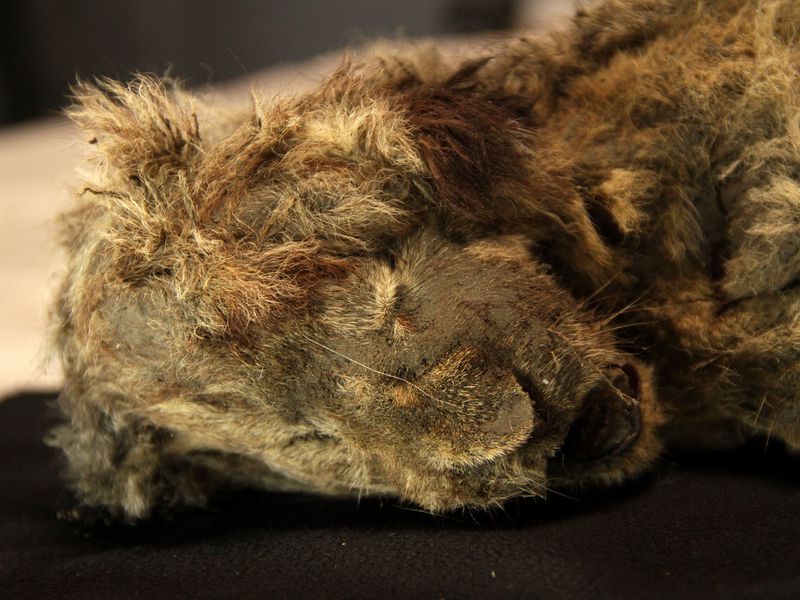There is excitement among the researchers as what is being described as the almost perfect frozen corpse of a cave lion cub has been found. Discovered in Siberia, it will enable scientists and experts to know more about this extinct species, which shared the planet with humankind thousands of years ago.
A visual recording of the corpse shows scientists taking a close and hard look at the body while carefully taking hair samples from it. The viewer gets a feeling that it is the body of a baby lion which probably died just a few days back. Well, surprise, the cub has been dead for nearly 30 millennia and it was till recently covered in permafrost in Siberia.
The frozen cub corpse has been named Sparta, who is a female cave lion, estimated to be 27,962 years old, as per the study published in the month of August in Quarternary, a journal.
Giving these details in an article in smithsonianmag.com, it is stated that this may be the most well-preserved specimen ever found — so intact that she still has whiskers, reports Carly Cassella of ScienceAlert. The study suggests that Sparta was most probably just one or two months old at the time of her death.
The researchers discovered this Ice Age cave lion (panthera spelaea) along with another less intact cub who has been christened as Boris. The experts stated that Boris is estimated to be 43,448 years old. Both the corpses were found at a dig site which is located near the river Senyalyakh in eastern Siberia above the Arctic Circle.
A report by Tim Fitzsimmons of NBC News said these species of lions, which were larger than the African ones, lived in colder climates across Eurasia before they became extinct nearly 10,000 years ago.
Throwing light on the Sparta’s corpse, Love Dalén who is the study author and evolutionary geneticist at Stockholm University’s Centre for Palaeogenetics, told NBC News: “To my knowledge, this is the best-preserved frozen specimen from the last Ice Age ever found. Sparta is in near-perfect condition.”
Also read: The Majestic Emperor Penguins could face extinction due to climate change
It is no conjecture that cave lions shared the planet with human beings. The study on this aspect said that cave lions coexisted with early humans for thousands of years. There is proof for this coexistence too. For instance. in France in the Chauvet Cave one finds cave lions drawn on its walls. These early cave paintings are estimated to be more than 30,000 years old.
There appears to be a difference in the colour of the cub fur when compared to that of the mature cave lions. This needs to be studied in order to find out and understand if this alteration occurs due to aging.
Experts also found similarities between the fur of the Ice Age big cats and the present day lions who roam about in Africa’s savannas. As compared to the ones in today’s age, this species is supposed to have smaller manes while adapting to survive and exist in the climates which were very cold.
The report said: “Cave lion fur also has a long thick fur undercoat consisting of strombuliform aeriferous fur hair. It covers the body of a cave lion cub evenly and most likely helped cave lion cubs adapt to the cold climate.”
Also read: Desi cow breeds to be protected by Tirumala Tirupati Devasthanams
Superficially the corpses look by and large intact, but scans of the cubs reveal a different story. The cub corpses showed they were hurt. Their bodies show that they had suffered skull damage, dislocated ribs and other injuries at the time of death. As no visible signs of predation have been found, the experts and the leading researchers wonder if the cubs had died accidentally.
Talking about this, Dalen told CNN’s Katie Hunt: “Given their preservation they must have been buried very quickly. So maybe they died in a mudslide, or fell into a crack in the permafrost. Permafrost forms large cracks due to seasonal thawing and freezing.”
The experts and scientists hope to sequence the genome of both cubs. This will give them a better insight and also better understanding of this extinct species who once roamed along with our ancestors!




















